В Штатах найден один из создателей дивизии СС Галычина
Американскими репортерами агентства Associated Press (AP) обнаружен в городе Миннеаполис бывший командир роты из дивизии СС "Галычина", которая прославилась своими карательными вылазками во время Второй мировой войны.
94-летний гражданин США Майкл Каркоц, aka Мыхайло Каракоц, приехал в Штаты в 1949 году и заявил, что никогда не был призван на военную службу и никогда не участвовал ни в каких боях. Оказалось - врал, спасая шкуру.
Когда он заполнял иммиграционную карточку, то в графе о роде деятельности написал: отцовский подмастерье до 1944 года, плотник в трудовом лагере до 1945 года.
Ушлые журналисты собрали сведения, что Каркоц - один из тех, кто создавал Украинский легион самообороны, а затем возглавлял роту в дивизии СС Галычина. Эти факты подтверждены соответствующими документами, полученными AP по запросу из различных ведомств по закону о свободе информации.
На самом деле он присоединился к регулярной немецкой армии в 1941 году, когда нацисты оккупировали украинскую территорию, и был награжден Железным Крестом за смелость. Судя по всему речь идет о батальонах Роланд или Нахтигаль, которые были сформированы оккупантами в 1941 году.
С 1943 года, когда ситуация на фронтах стала складываться не в пользу Германии, и отступающие захватчики озаботились подавлением партизанского движения на временно оккупированных территориях, он помогал вербовать украинцев в так называемый Легион Самообороны, в который вошли 600 коллаборационистов. Речь скорее всего про Легион Волынь, потому как дед - уроженец Луцка.
Позже Легион влился в дивизию Ваффен-СС Галычина, чья основная задача состояла в карательных акциях против славянского населения: на счету так называемых борцов за украинскую независимость подавление Словацкого восстания, Варшавского восстания, уничтожение сотен украинских и югославских партизан, а также тысяч мирных жителей разных стран.
Выглядит так, что за прошлые преступления деда взять нельзя, но он совершил страшное - нарушил закон Штатов, ибо членам Галицийской дивизии и Украинского легиона самообороны, внесённых в чёрный список воинских формирований, воевавших на стороне нацистов, было запрещено в то время въезжать в США, которая вместе с СССР воевала как раз на стороне победителей. Их не выдали СССР исключительно после вмешательства Ватикана, который назвал сдавшихся западным союзникам преступников "преданными католиками и антикоммунистами".
Агентство не располагает данными о том, что Каркоц непосредственно руководил уничтожением гражданских в военные годы, но есть свидетельские показания бывших эсэсовцев, что во время карательных операций он был на месте военных преступлений, а его рота в 1944 году участвовала в подавлении знаменитого Варшавского восстания.
АП делает предположения о депортации раскрытого нациста, мотивируя это тем, что за послевоенную историю министерством юстиции из США было высланы десятки человек и основанием для этого была всего лишь недостоверная информация в иммиграционных анкетах, а не доказательство преступлений против человечества.
В Германии проявляют серьезный интерес к этому делу, желая досконально изучить документы , которые показывают причастность Каркоца к деятельности СС.
Если в Германии докажут достоверность обличающих документов, то против Каркоца будет выдвинуто обвинение, как в свое время против небезызвестного Джона Халимона, который и умер, находясь под судом в 92 года.
По словам "Охотника за нацистами" из центра Симона Визенталя в Иерусалиме Эфраима Зуроффа, осудить Каркоца будет легко, так как , если он действительно командовал ротой, то вовсе необязательно доказывать, что он лично нажимал на курок. В любом случае он ответственен, считает представитель народа, который немало настрадался от нацистов.
Судебные перспективы дела подтверждает и Томас Вальтер, бывший прокурор немецкой прокуратуры, специалист по военным преступлениям нацистов. Что же касается Украины, то американский журналист вполне резонно замечает, что в стране, которая раскинулась лоскутным одеялом в самом центре Европы, такой судне состоится, ибо сегодня личности, подобные Каркоцу, объявляются национальными героями в деле борьбы против СССР.
Самого престарелого иммигранта нет возможности ни о чём спросить, он отказывается контактировать с представителями прессы. Дед живёт в скромном доме на северо-востоке Миннеаполиса, где компактно проживает немалое число представителей украинской диаспоры.
Несмотря на возраст, внешне он выглядит довольно крепким. На вопросы о нацисткой службе не отвечает, как и прежде. Журналисты пытались взять интервью через сына, но эта затея, также, не увенчалась успехом.
Свидетели рассказывают о жестокости СС Галичына, в отношении гражданских лиц. Василий Матаженский, служивший под началом Каркоца, рассказывал советскому следствию, что в 1944 году дивизии был отдан приказ ликвидировать всех жителей польской деревни в качестве мести за убитого офицера СС. Каратели не щадили ни мужчин, ни женщин, ни детей. Деревня была полностью разрушена.
Репортёры также раскрыли имя своего источника - бывшего фармаколога и жителя Лондона Стивена Ларкина, изучающего преступления нацистов, который проследил историю создания СС Галычина и путь её членов до берегов Великобритании, куда они эмигрировали.
Ларкин - нужно ли говорить, какой народ он представляет? - увидел имя Каркоца в списках жителей американского штата Миннесота и сообщил об этом АР. Запросив документы на Каркоца из Национального архива армии США, отвечающего после войны за визы для вынужденных переселенцев, репортёры не обнаружили в его карточке никаких данных о его прошлом. Дальнейшую работу провели уже военные.
В АП сообщают о книге, которую Каркоц издал в 1995 году на украинском языке. В ней он рассказывает о своей роли в создании вместе с нацистами так называемого Украинского легиона самообороны в 1943 году, о службе командиром некоего отряда, получавшего задания конкретно от СС.
Якобы он с 1939 года состоит в ОУН и сразу после включения Западной Украины в состав СССР боролся с Советами, будучи известен под партийной кличкой Вовк.
В мемуарах Каркоца мудро не упоминается об убийствах гражданских лиц, но вспоминается об убитом в Польше офицере СС Зигфриде Асмуссе и есть сожаления о том, что в бою с партизанами его отряд потерял незаменимого командира. Об ответной резне в деревне, в книге не упоминается.
Совершенно не ясно в этом деле то, что издавая подобный труд, Каркоц чувствовал себя в безопасно. Ведь он знал, что к книге был общий доступ, как в магазинах и библиотеках Великобритании, так и в США, в том числе на разнообразных украинских сайтах в мировой Сети.
Это они еще не читали украинские газеты и интернеты в своих Штатах.


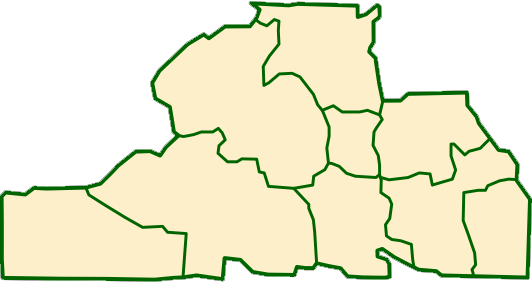



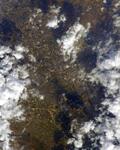
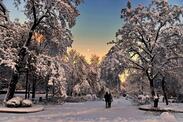
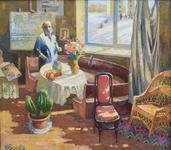
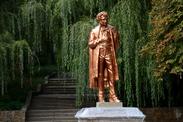



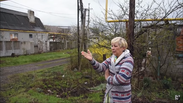
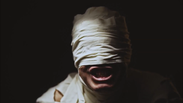

Комментарии
Nazi Unit Leader's Minneapolis Life Prompts Shock
by THE ASSOCIATED PRESS
June 14, 201311:23 PM
MINNEAPOLIS (AP) — The revelation Friday that a former commander of a Nazi SS-led military unit has lived quietly in Minneapolis for the past six decades came as a shock to people who knew him, prompted harsh condemnations from World War II survivors in the U.S. and Europe, and led prosecutors in Poland to say they would investigate.
An Associated Press investigation found that 94-year-old Michael Karkoc served as a top commander in the Ukrainian Self-Defense Legion during World War II. The unit is accused of wartime atrocities, including the burning of villages filled with women and children. Wartime records don't show that Karkoc had a direct hand in war crimes, though records indicate he lied about his military past when immigrating to the U.S.
"I know him personally. We talk, laugh. He takes care of his yard and walks with his wife," his next-door neighbor, Gordon Gnasdoskey, said Friday. Gnasdoskey, the grandson of a Ukrainian immigrant himself, said he was disturbed by the revelations about his longtime neighbor.
No one answered the door Friday morning at Karkoc's house on a residential street in northeast Minneapolis, where several television news trucks were parked outside. Karkoc had earlier declined to comment on his wartime service when approached by the AP, and repeated efforts to arrange an interview through his son — including again Friday — were unsuccessful.
Late Friday, Karkoc's son, Andriy Karkos, read a statement accusing AP of defaming Karkoc. He pointed to the portion of the AP story that said records don't show Karkoc had a direct hand in war crimes.
"That's the god's honest truth," said Karkos, who uses a different spelling for his last name. "My father was never a Nazi."
He said the family wouldn't comment further until it has obtained its own documents and reviewed witnesses and sources.
Sam Rafowitz, an 88-year-old Jewish resident of the Minneapolis suburb of Minnetonka, grew up in Warsaw, Poland, and spent four years working in concentration camps. He took a hard line after hearing the news about Karkoc.
"I think they should put him on trial," said Rafowitz, who was born near the border of Germany and Poland.
He may get his wish: Poland's National Remembrance Institute, which prosecutes wartime crimes, said its prosecutors would investigate Karkoc's "possible role" in crimes committed by the legion and would provide "every possible assistance" in gathering evidence for the U.S. justice system. The U.S. government has previously used lies in immigration papers to deport dozens of suspected Nazi war criminals.
Karkoc's unit was associated with the 1944 Warsaw uprising, in which Nazis brutally suppressed a Polish rebellion against German occupation. Karkoc also lied to American immigration officials to get into the U.S., telling authorities in 1949 that he had performed no military service during the war. He became a naturalized U.S. citizen in 1959.
In Washington, Justice Department spokesman Michael Passman said the agency was aware of the AP story.
"While we do not confirm or deny the existence of specific investigations, I can say as a general matter that the Department of Justice continues to pursue all credible allegations of participation in World War II Nazi crimes by US citizens and residents," Passman said.
Gnasdoskey said the neighborhood where he and Karkoc live, just northeast of the city's downtown, was once a destination for displaced persons from Slavic countries, Ukraine, Poland and other countries in the region. The area has diversified over the years, but is still occupied by the last of those residents along with some of their descendants. Karkoc and his family are longtime members of the St. Michael's and St. George's Ukrainian Orthodox Church, among several Catholic and Orthodox churches in the neighborhood.
"All the time I am here, I know him as a good man, a good citizen," said the Rev. Evhen Kumka, the church's pastor. "He's well known in the congregation."
Kumka moved from Ukraine to Minnesota 19 years ago to lead the congregation, and said Karkoc was already active in the church at that time. Kumka wouldn't say whether he'd spoken to Karkoc about his past, but said he was skeptical.
"I don't think everything is correct," Kumka said. "As I know him, he is a good example for many people."
Valentina Yarr of Minneapolis, a former president of the church council, said she had also known Karkoc and members of his family for many years.
"I don't have anything bad to say about him, nor did I ever hear a hint of anything like this," Yarr said. "I'd rather not say anything else."
Karkoc worked as a carpenter in Minneapolis, and appeared in a 1980 issue of Carpenter magazine among a group celebrating 25 years of union membership. He was a member and a secretary in the local branch of the Ukrainian National Association, a fraternal organization, and voting records obtained by the AP show he regularly voted in city, state and general elections.
News of Karkoc's past also prompted anger from World War II survivors overseas, in countries where the Ukrainian Self-Defense Legion was active.
In Poland, Honorata Banach told the AP she wants Karkoc to apologize. She was 20 when she fled the Polish village of Chlaniow before it was burned down by the legion.
"There was so much suffering, so many orphans, so much pain," Banach said. She and her mother returned the day after the attack, she said, to see that "everything was burned down, even the fences, the trees. I could not even find my house."
Survivors told her the Ukrainian legion did it, she said.
Rafowitz, the survivor living near Minneapolis, said he lost his mother and other relatives at the Majadenk concentration camp in Lublin, in German-occupied Poland. He said soldiers in the camp were German but that it was run by Ukrainians.
"You don't forget," Rafowitz said. "For me, it's been almost close to 70 years those things happened, but I still know about it. I still remember everything."
Menachem Rosensaft, who was born in the Bergen-Belsen concentration camp, now teaches the law of genocide and war crimes at several New York universities. He said Karkoc is a reminder that the Holocaust and other genocides "cannot be viewed as abstract history."
"I have every confidence that if Mr. Karkoc was not already on the Justice Department's radar screen, he now is," Rosensaft said.
___
Associated Press reporters Monika Scislowska in Warsaw, Pete Yost in Washington, Doug Glass in Minneapolis and Brian Bakst in St. Paul, Minn., and AP investigative researcher Randy Herschaft contributed to this report.
http://www.npr.org/templates/story/story.php?storyId=191707569
MINNEAPOLIS (KMSP) -
By DAVID RISING, RANDY HERSCHAFT and MONIKA SCISLOWSKA
Associated Press
BERLIN (AP) -- A top commander of a Nazi SS-led unit accused of burning villages filled with women and children lied to American immigration officials to get into the United States and has been living in Minnesota since shortly after World War II, according to evidence uncovered by The Associated Press.
Michael Karkoc, 94, told American authorities in 1949 that he had performed no military service during World War II, concealing his work as an officer and founding member of the SS-led Ukrainian Self Defense Legion and later as an officer in the SS Galician Division, according to records obtained by the AP through a Freedom of Information Act request. The Galician Division and a Ukrainian nationalist organization he served in were both on a secret American government blacklist of organizations whose members were forbidden from entering the United States at the time.
Though records do not show that Karkoc had a direct hand in war crimes, statements from men in his unit and other documentation confirm the Ukrainian company he commanded massacred civilians, and suggest that Karkoc was at the scene of these atrocities as the company leader. Nazi SS files say he and his unit were also involved in the 1944 Warsaw Uprising, in which the Nazis brutally suppressed a Polish rebellion against German occupation.
Polish prosecutors announced Friday after the release of the AP investigation that they will investigate Karkoc and provide "every possible assistance" to the U.S. Department of Justice, which has used lies in immigration papers to deport dozens of suspected Nazi war criminals. The AP evidence of Karkoc's wartime activities has also prompted German authorities to express interest in exploring whether there is enough to prosecute. In Germany, Nazis with "command responsibility" can be charged with war crimes even if their direct involvement in atrocities cannot be proven.
Karkoc refused to discuss his wartime past at his home in Minneapolis, and repeated efforts to set up an interview, using his son as an intermediary, were unsuccessful.
Efraim Zuroff, the lead Nazi hunter at the Simon Wiesenthal Center in Jerusalem, said that based on his decades of experience pursuing Nazi war criminals, he expects that the evidence showing Karkoc lied to American officials and that his unit carried out atrocities is strong enough for deportation and war-crimes prosecution in Germany or Poland.
"In America this is a relatively easy case: If he was the commander of a unit that carried out atrocities, that's a no brainer," Zuroff said. "Even in Germany ... if the guy was the commander of the unit, then even if they can't show he personally pulled the trigger, he bears responsibility."
Former German army officer Josef Scheungraber -- a lieutenant like Karkoc -- was convicted in Germany in 2009 on charges of murder based on circumstantial evidence that put him on the scene of a Nazi wartime massacre in Italy as the ranking officer.
German prosecutors are obligated to open an investigation if there is enough "initial suspicion" of possible involvement in war crimes, said Thomas Walther, a former prosecutor with the special German office that investigates Nazi war crimes.
The current deputy head of that office, Thomas Will, said there is no indication that Karkoc had ever been investigated by Germany. Based on the AP's evidence, he said he is now interested in gathering information that could possibly result in prosecution.
Prosecution in Poland may also be a possibility because most of the unit's alleged crimes were against Poles on Polish territory. But Karkoc would be unlikely to be tried in his native Ukraine, where such men are today largely seen as national heroes who fought for the country against the Soviet Union.
Karkoc now lives in a modest house in northeast Minneapolis in an area with a significant Ukrainian population. Even at his advanced age, he came to the door without help of a cane or a walker. He would not comment on his wartime service for Nazi Germany.
"I don't think I can explain," he said.
Members of his unit and other witnesses have told stories of brutal attacks on civilians.
One of Karkoc's men, Vasyl Malazhenski, told Soviet investigators that in 1944 the unit was directed to "liquidate all the residents" of the village of Chlaniow in a reprisal attack for the killing of a German SS officer, though he did not say who gave the order.
"It was all like a trance: setting the fires, the shooting, the destroying," Malazhenski recalled, according to the 1967 statement found by the AP in the archives of Warsaw's state-run Institute of National Remembrance, which investigates and prosecutes German and Soviet crimes on Poles during and after World War II.
"Later, when we were passing in file through the destroyed village," Malazhenski said, "I could see the dead bodies of the killed residents: men, women, children."
In a background check by U.S. officials on April 14, 1949, Karkoc said he had never performed any military service, telling investigators that he "worked for father until 1944. Worked in labor camp from 1944 until 1945."
However, in a Ukrainian-language memoir published in 1995, Karkoc states that he helped found the Ukrainian Self Defense Legion in 1943 in collaboration with the Nazis' feared SS intelligence agency, the SD, to fight on the side of Germany -- and served as a company commander in the unit, which received orders directly from the SS, through the end of the war.
It was not clear why Karkoc felt safe publishing his memoir, which is available at the U.S. Library of Congress and the British Library and which the AP located online in an electronic Ukrainian library.
Karkoc's name surfaced when a retired clinical pharmacologist who took up Nazi war crimes research in his free time came across it while looking into members of the SS Galician Division who emigrated to Britain. He tipped off AP when an Internet search showed an address for Karkoc in Minnesota.
"Here was a chance to publicly confront a man who commanded a company alleged to be involved in the cruel murder of innocent people," said Stephen Ankier, who is based in London.
The AP located Karkoc's U.S. Army intelligence file, and got it declassified by the National Archives in Maryland through a FOIA request. The Army was responsible for processing visa applications after the war under the Displaced Persons Act.
The intelligence file said standard background checks with seven different agencies found no red flags that would disqualify him from entering the United States. But it also noted that it lacked key information from the Soviet side: "Verification of identity and complete establishment of applicant's reliability is not possible due to the inaccessibility of records and geographic area of applicant's former residence."
Wartime documents located by the AP also confirm Karkoc's membership in the Self Defense Legion. They include a Nazi payroll sheet found in Polish archives, signed by an SS officer on Jan. 8, 1945 -- only four months before the war's end -- confirming that Karkoc was present in Krakow, Poland, to collect his salary as a member of the Self Defense Legion. Karkoc signed the document using Cyrillic letters.
Karkoc, an ethnic Ukrainian, was born in the city of Lutsk in 1919, according to details he provided American officials. At the time, the area was being fought over by Ukraine, Poland and others; it ended up part of Poland until World War II. Several wartime Nazi documents note the same birth date, but say he was born in Horodok, a town in the same region.
He joined the regular German army after the Nazi invasion of the Soviet Union in 1941 and fought on the Eastern Front in Ukraine and Russia, according to his memoirs, which say he was awarded an Iron Cross for bravery.
He was also a member of the Ukrainian nationalist organization OUN; in 1943, he helped negotiate with the Nazis to have men drawn from its membership form the Self Defense Legion, according to his account. Initially small, it eventually numbered some 600 soldiers. The legion was dissolved and folded into the SS Galician Division in 1945; Karkoc wrote that he remained with it until the end of the war.
Policy at the time of Karkoc's immigration application -- according to a declassified secret U.S. government document obtained by the AP from the National Archives -- was to deny a visa to anyone who had served in either the SS Galician Division or the OUN. The U.S. does not typically have jurisdiction to prosecute Nazi war crimes but has won more than 100 "denaturalization and removal actions" against people suspected of them.
In Washington, Justice Department spokesman Michael Passman said the agency was aware of the AP story.
"While we do not confirm or deny the existence of specific investigations, I can say as a general matter that the Department of Justice continues to pursue all credible allegations of participation in World War II Nazi crimes by US citizens and residents," Passman said.
Though Karkoc talks in his memoirs about fighting anti-Nazi Polish resistance fighters, he makes no mention of attacks on civilians. He does indicate he was with his company in the summer of 1944 when the Self Defense Legion's commander -- Siegfried Assmuss, whose SS rank was equivalent to major -- was killed.
"We lost an irreplaceable commander, Assmuss," he wrote about the partisan attack near Chlaniow.
He did not mention the retaliatory massacre that followed, which was described in detail by Malazhenski in his 1967 statement used to help convict platoon leader Teodozy Dak of war crimes in Poland in 1972. An SS administrative list obtained by AP shows that Karkoc commanded both Malazhenski and Dak, who died in prison in 1974.
Malazhenski said the Ukrainian unit was ordered to liquidate Chlaniow in reprisal for Assmuss' death, and moved in the next day, machine-gunning people and torching homes. More than 40 people died.
"The village was on fire," Malazhenski said.
Villagers offered chilling testimony about the brutality of the attack.
In 1948, Chlaniow villager Stanislawa Lipska told a communist-era commission that she heard shots at about 7 a.m., then saw "the Ukrainian SS force" entering the town, calling out in Ukrainian and Polish for people to come out of their homes.
"The Ukrainians were setting fire to the buildings," Lipska said in a statement, also used in the Dak trial. "You could hear machine-gun shots and grenade explosions. Shots could be heard inside the village and on the outskirts. They were making sure no one escaped."
Witness statements and other documentation also link the unit circumstantially to a 1943 massacre in Pidhaitsi, on the outskirts of Lutsk --today part of Ukraine -- where the Self Defense Legion was once based. A total of 21 villagers, mostly women and children, were slaughtered.
Karkoc says in his memoir that his unit was founded and headquartered there in 1943 and later mentions that Pidhaitsi was still the unit's base in January 1944.
Another legion member, Kost Hirniak, said in his own 1977 memoir that the unit, while away on a mission, was suddenly ordered back to Pidhaitsi after a German soldier was killed in the area; it arrived on Dec. 2, 1943.
The next day, though Hirniak does not mention it, nearly two dozen civilians, primarily women and children, were slaughtered in Pidhaitsi. There is no indication any other units were in the area at the time.
Heorhiy Syvyi was a 9-year-old boy when troops swarmed into town on Dec. 3 and managed to flee with his father and hide in a shelter covered with branches. His mother and 4-year-old brother were killed.
"When we came out we saw the smoldering ashes of the burned house and our neighbors searching for the dead. My mother had my brother clasped to her chest. This is how she was found -- black and burned," said Syvyi, 78, sitting on a bench outside his home.
Villagers today blame the attack generically on "the Nazis" -- something that experts say is not unusual in Ukraine because of the exalted status former Ukrainian nationalist troops enjoy.
However, Pidhaitsi schoolteacher Galyna Sydorchuk told the AP that "there is a version" of the story in the village that the Ukrainian troops were involved in the December massacre.
"There were many in Pidhaitsi who were involved in the Self Defense Legion," she said. "But they obviously keep it secret."
Ivan Katchanovski, a Ukrainian political scientist who has done extensive research on the Self Defense Legion, said its members have been careful to cultivate the myth that their service to Nazi Germany was solely a fight against Soviet communism. But he said its actions -- fighting partisans and reprisal attacks on civilians -- tell a different story.
"Under the pretext of anti-partisan action they acted as a kind of police unit to suppress and kill or punish the local populations. This became their main mission," said Katchanovski, who went to high school in Pidhaitsi and now teaches at the University of Ottawa in Canada. "There is evidence of clashes with Polish partisans, but most of their clashes were small, and their most visible actions were mass killings of civilians."
There is evidence that the unit took part in the brutal suppression of the Warsaw Uprising, fighting the nationalist Polish Home Army as it sought to rid the city of its Nazi occupiers and take control of the city ahead of the advancing Soviet Army.
The uprising, which started in August 1944, was put down by the Nazis by the beginning of October in a house-to-house fight characterized by its ferocity.
The Self Defense Legion's exact role is not known, but Nazi documents indicate that Karkoc and his unit were there.
An SS payroll document, dated Oct. 12, 1944, says 10 members of the Self Defense Legion "fell while deployed to Warsaw" and more than 30 others were injured. Karkoc is listed as the highest-ranking commander of 2 Company -- a lieutenant -- on a pay sheet that also lists Dak as one of his officers.
Another Nazi accounting document uncovered by the AP in the Polish National Archives in Krakow lists Karkoc by name -- including his rank, birthdate and hometown -- as one of 219 "members of the S.M.d.S.-Batl 31 who were in Warsaw," using the German abbreviation for the Self Defense Legion.
In early 1945, the Self Defense Legion was integrated into the SS Galicia Division, and Karkoc said in his memoirs that he served as a deputy company commander until the end of the war.
Following the war, Karkoc ended up in a camp for displaced people in Neu Ulm, Germany, according to documents obtained from the International Tracing Service in Bad Arolsen, Germany. The documents indicate that his wife died in 1948, a year before he and their two young boys -- born in 1945 and 1946 -- emigrated to the U.S.
After he arrived in Minneapolis, he remarried and had four more children, the last born in 1966.
Karkoc told American officials he was a carpenter, and records indicate he worked for a nationwide construction company that has an office in Minneapolis.
A longtime member of the Ukrainian National Association, Karkoc has been closely involved in community affairs over the past decades and was identified in a 2002 article in a Ukrainian-American publication as a "longtime UNA activist."
The lights were on at Karkoc's home Friday morning, but nobody answered a knock from an AP reporter seeking reaction to this story.
Karkoc's next-door neighbor said has known the Ukrainian immigrant for many years, and was stunned to learn about the Nazi past of a man he has shared laughs with and known as a churchgoer.
"For me, this is a shock," said Gordon Gnasdoskey, 79. "To come to this country and take advantage of its freedoms all of these years, it blows my mind."
http://www.myfoxtwincities.com/story/22591452/michael-karkoc-nazi-commander-living-in-minneapolis
Michael Karkoc Revelations: Nazi Unit Leader's Minneapolis Life Prompts Shock
By PATRICK CONDON and AMY FORLITI 06/14/13 11:21 PM ET EDT
MINNEAPOLIS — The revelation Friday that a former commander of a Nazi SS-led military unit has lived quietly in Minneapolis for the past six decades came as a shock to people who knew him, prompted harsh condemnations from World War II survivors in the U.S. and Europe, and led prosecutors in Poland to say they would investigate.
An Associated Press investigation found that 94-year-old Michael Karkoc served as a top commander in the Ukrainian Self-Defense Legion during World War II. The unit is accused of wartime atrocities, including the burning of villages filled with women and children. Wartime records don't show that Karkoc had a direct hand in war crimes, though records indicate he lied about his military past when immigrating to the U.S.
"I know him personally. We talk, laugh. He takes care of his yard and walks with his wife," his next-door neighbor, Gordon Gnasdoskey, said Friday. Gnasdoskey, the grandson of a Ukrainian immigrant himself, said he was disturbed by the revelations about his longtime neighbor.
No one answered the door Friday morning at Karkoc's house on a residential street in northeast Minneapolis, where several television news trucks were parked outside. Karkoc had earlier declined to comment on his wartime service when approached by the AP, and repeated efforts to arrange an interview through his son – including again Friday – were unsuccessful.
Late Friday, Karkoc's son, Andriy Karkos, read a statement accusing AP of defaming Karkoc. He pointed to the portion of the AP story that said records don't show Karkoc had a direct hand in war crimes.
"That's the god's honest truth," said Karkos, who uses a different spelling for his last name. "My father was never a Nazi."
He said the family wouldn't comment further until it has obtained its own documents and reviewed witnesses and sources.
Sam Rafowitz, an 88-year-old Jewish resident of the Minneapolis suburb of Minnetonka, grew up in Warsaw, Poland, and spent four years working in concentration camps. He took a hard line after hearing the news about Karkoc.
"I think they should put him on trial," said Rafowitz, who was born near the border of Germany and Poland.
He may get his wish: Poland's National Remembrance Institute, which prosecutes wartime crimes, said its prosecutors would investigate Karkoc's "possible role" in crimes committed by the legion and would provide "every possible assistance" in gathering evidence for the U.S. justice system. The U.S. government has previously used lies in immigration papers to deport dozens of suspected Nazi war criminals.
Karkoc's unit was associated with the 1944 Warsaw uprising, in which Nazis brutally suppressed a Polish rebellion against German occupation. Karkoc also lied to American immigration officials to get into the U.S., telling authorities in 1949 that he had performed no military service during the war. He became a naturalized U.S. citizen in 1959.
In Washington, Justice Department spokesman Michael Passman said the agency was aware of the AP story.
"While we do not confirm or deny the existence of specific investigations, I can say as a general matter that the Department of Justice continues to pursue all credible allegations of participation in World War II Nazi crimes by US citizens and residents," Passman said.
Gnasdoskey said the neighborhood where he and Karkoc live, just northeast of the city's downtown, was once a destination for displaced persons from Slavic countries, Ukraine, Poland and other countries in the region. The area has diversified over the years, but is still occupied by the last of those residents along with some of their descendants. Karkoc and his family are longtime members of the St. Michael's and St. George's Ukrainian Orthodox Church, among several Catholic and Orthodox churches in the neighborhood.
"All the time I am here, I know him as a good man, a good citizen," said the Rev. Evhen Kumka, the church's pastor. "He's well known in the congregation."
Kumka moved from Ukraine to Minnesota 19 years ago to lead the congregation, and said Karkoc was already active in the church at that time. Kumka wouldn't say whether he'd spoken to Karkoc about his past, but said he was skeptical.
"I don't think everything is correct," Kumka said. "As I know him, he is a good example for many people."
Valentina Yarr of Minneapolis, a former president of the church council, said she had also known Karkoc and members of his family for many years.
"I don't have anything bad to say about him, nor did I ever hear a hint of anything like this," Yarr said. "I'd rather not say anything else."
Karkoc worked as a carpenter in Minneapolis, and appeared in a 1980 issue of Carpenter magazine among a group celebrating 25 years of union membership. He was a member and a secretary in the local branch of the Ukrainian National Association, a fraternal organization, and voting records obtained by the AP show he regularly voted in city, state and general elections.
News of Karkoc's past also prompted anger from World War II survivors overseas, in countries where the Ukrainian Self-Defense Legion was active.
In Poland, Honorata Banach told the AP she wants Karkoc to apologize. She was 20 when she fled the Polish village of Chlaniow before it was burned down by the legion.
"There was so much suffering, so many orphans, so much pain," Banach said. She and her mother returned the day after the attack, she said, to see that "everything was burned down, even the fences, the trees. I could not even find my house."
Survivors told her the Ukrainian legion did it, she said.
Rafowitz, the survivor living near Minneapolis, said he lost his mother and other relatives at the Majadenk concentration camp in Lublin, in German-occupied Poland. He said soldiers in the camp were German but that it was run by Ukrainians.
"You don't forget," Rafowitz said. "For me, it's been almost close to 70 years those things happened, but I still know about it. I still remember everything."
Menachem Rosensaft, who was born in the Bergen-Belsen concentration camp, now teaches the law of genocide and war crimes at several New York universities. He said Karkoc is a reminder that the Holocaust and other genocides "cannot be viewed as abstract history."
"I have every confidence that if Mr. Karkoc was not already on the Justice Department's radar screen, he now is," Rosensaft said.
___
Associated Press reporters Monika Scislowska in Warsaw, Pete Yost in Washington, Doug Glass in Minneapolis and Brian Bakst in St. Paul, Minn., and AP investigative researcher Randy Herschaft contributed to this report.
http://www.myfoxtwincities.com/story/22591452/michael-karkoc-nazi-comm...